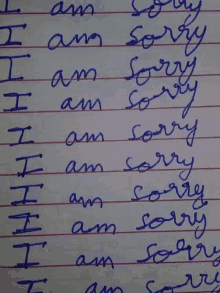The Prism Exercise: A College Essay Exercise
- Sawyer Earwood, CEP

- May 12, 2021
- 5 min read
Updated: Jul 10, 2023

There are few things that cause panic in a student like mentioning the words, "college essay." It's understandable; our educational culture has shed an unflattering light on the word "essay." After all, in popular culture, what are "bad" students forced to do? Write. They are forced to write on the chalkboard, write an apology note, or write a reflection essay. When students are asked to write in class, they are usually forced to conform their vision to a set of rules or standards such as word counts, page minimums, page maximums, specific citation styles, or an inflexible essay structure that acts like more of a recipe than an expression of a student's thoughts and ideas.
College essays are different from any essay most students will ever write in their English class, and that's why I love them. I've spoken at length about how the college search is so much more than just an acceptance letter. The college search offers an incredibly valuable opportunity for students to turn their gaze inward and begin an important journey of self-reflection and growth. If a student approaches the college search with an open mind, they will find themselves analyzing who they are, how they became themselves, and what they hope to be in the future. That introspection provides the resources for crafting compelling and unique essays that show both authenticity and vulnerability.
Some college essays have very specific prompts that can be skillfully dissected and deciphered to discover what sort of response the college is searching for. Students tend to have an easier time with prompts, but in my experience, real growth comes from the moments where a student must choose their own topic. It saddens me to say it, but many students go through their entire K-12 education without ever writing an essay on a topic of their choosing with no restrictions on style or formatting. Because most students learn writing while confined within a cage of rules, very few know where they should even begin to compose something that is uniquely theirs. I've seen this scenario countless times with students, so today I'm going to breakdown a simple, but effective, exercise to help brainstorm ideas, topics, and themes for a college essay.
The Prism Exercise

We created the nifty infographic above for students and families, but this blog post will delve a little deeper into explaining this exercise.
What is a Prism?

Most people have seen or heard of a prism before, even if it is just in reference to something like a kaleidoscope (if you haven't seen a prism, just look at the image for the blog cover). Now, I don't claim to be a scientist, so I'm going to keep this very surface level. When we think of light, we commonly think of the white light you might see through a window on a sunny day or the beam of light from a flashlight. This "white" light is actually a combination of several different colors of light that all have their own unique wavelengths. In the most simplistic terms, a prism bends light. When the light is bent, each of these different colors bends at a different angle based on its wavelength. These different angles based on the color's wavelength land in different locations. Thus, a single "white" light becomes a rainbowed array of refracted lights based on the color's wavelength.
(P.S. My apologies to all the scientists out there for my rudimentary explanation.)
What is the Prism Exercise?
Now that we've stumbled through the science, I can take the lead on something I excel at, metaphors. Let's apply the idea of a prism to the concept of a personality. When people think about who they are, it is often an amalgamation of all their life experiences up to that point. For example, if someone asks me who I am, I'm going to answer "Sawyer." But what is Sawyer? Sawyer is just a concept, a name given to me that simplifies all of my experiences and personality into a convenient two syllable name. In this metaphor, "Sawyer" is the "white" light that we see on a daily basis. So what happens if you shine "Sawyer" through a prism? "Sawyer," much like the "white" light, will be refracted into all the different parts that collectively make a "Sawyer." If you're feeling a little existential dread don't worry, that's normal. Now that we have the foundation of the metaphor established, we can dive into how students can use this exercise for college essay brainstorming.
How to use the Prism Exercise
By this point we've conceptually covered a prism and the Prism Exercise. The next step is learning how to use the prism exercise. One of our core principles at Virtual College Counselors is authenticity. We believe that the college journey requires some vulnerability on a student's part. How can we ask students to demonstrate vulnerability if we don't do the same in return? So, as an example, I have created my own Prism Exercise to give students an idea of what the final product might look like. A student can choose whatever categories they like, but we believe the following categories are unique while still being large enough categories for students to explore.
For my exercise I chose four categories:
Identities
Values
Passions
Experiences
I asked myself the following questions while completing the exercise:
"What identities do I associate with myself? What makes me, me?"
"What are my values?"
"What am I passionate about?"
"What experiences have shaped me to be who I am today?"

After a student finishes the Prism Exercise, they should take a step back and look at what they've brainstormed. It's likely that there will be a few trends, narratives, or common patterns amongst their refractions. Explore these refractions and start to think about how you might be able to translate them into a college essay. I recommend going a step further and thinking about the college application as a whole. We use the term "application narrative" to refer to the idea that a student should view the application as a single narrative rather than several assembled pieces. The chances of an admissions counselor making an authentic connection with a student or remembering their application increases astronomically if there is a very clear application narrative.
The goal of this post is to give students, parents, and college counselors another tool in their toolbox to help craft an authentic application that promotes self-reflection and growth for a student. If you have any questions, don't hesitate to reach out or schedule a free consultation through the link below. As always, I wish you the best of luck with your journey, wherever it might take you.
With all my support,
Sawyer Earwood
Independent College Counselor
Co-Founder of Virtual College Counselors










Comments